Home sweet home – altitude experience
This last trip to high altitude was moderately challenging physically and very slightly mentally. For the last 12 years my profession of racing yachts has taken me to much more physical and mental extremes than my altitude endeavors in 2012. The high altitude failures are frustrating, disappointing and puzzling for me all at once.
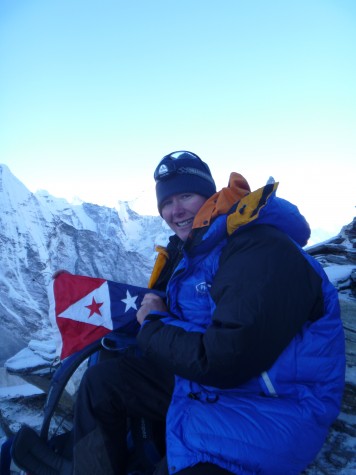
With SFYC burgee at 6000m smarter this time as I brought the fabric version. The plastic burgee fell apart in the cold at Aconcaqua at 6500m.
I was still making rational decisions at 6000m – gathering information on what remained of the climb and figuring out what percent of energy I felt I had left. I made a promise to myself that if I didn’t think I would have 50% of my energy left on the summit that I would not continue. At those altitudes the only person that will get you down the mountain is yourself. At lower altitudes you can have helicopter rescue (unlike the middle of the ocean). My heart wanted to continue up the hill but my lungs and my brain made the decision for me.
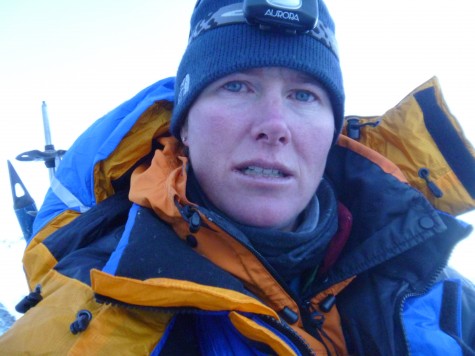
All that was left was to persuade Jon that I was capable of making it to crampon point to give the team each a good luck hug. I did try very hard to put on a smiley face after getting up from my hands and knees from a coughing and vomiting fit! The antibiotics didn’t stop my cold going to my chest and causing an infection.
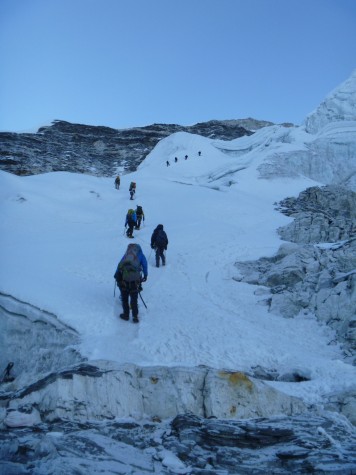
The guys heading on up without me.
I have always been able to prepare myself and my boats with lots of hard work and if not finish the races entered but end up on the podium. This new sport is something I haven’t found a successful equation for. Maybe there isn’t one – what I do know from reading is that your body reacts differently to altitude every time you go to a mountain. If the speed is down on the boat we logically figure out why and rectify the situation. To some degree this is possible with high altitude climbing but I think there is a large percent that can’t be controlled. The problem is we aren’t dealing with mechanical parts it is human physiology and if you get it wrong the potential for physical damage is higher. I monitor my pulse ox and that helps me with many other clues to understand what my body requires to go higher. I don’t get worried about those figures I just analyze why my figures are not as I expect them to be. My body does react quickly to help in the form of water, rest etc. at altitude but it does seem to lag behind others in acclimatization once I get to 5000m. We all acclimatize at a different rate which makes commercial mountaineering trips a difficult thing for my body to deal with.
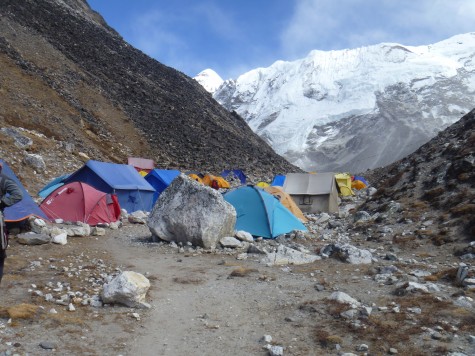
I think maybe a full days rest at base camp and then moving up to advanced base camp and starting from there would have made a difference to me however, commercial pressure would not allow that.
This last trip was physically a lot easier than Aconcaqua. We stayed at teahouses with heated communal areas en route except for two days in a tent. We ate sitting upright with knives and forks and didn’t have to carry our excrement in bags up and over the mountain. We didn’t carry our own gear as we had porters a huge difference which I didn’t get use to. This all meant it was more of a cruise in an Oyster 82 than a race in a Rogers 46. As a result I wasn’t ever in such a horrible state as I was on summit day back in January. So I guess I am very slowly learning from the experience despite not getting as high as in January it was an amazing trip with beautiful views and so much cultural history to learn.
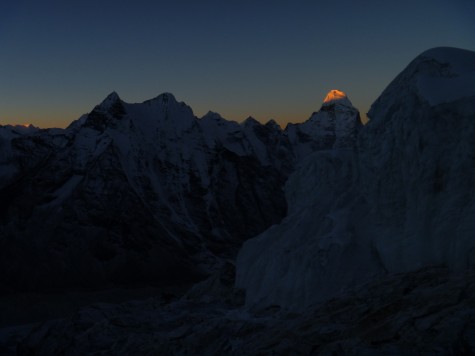 Ama lighting up as the sun comes up.
Ama lighting up as the sun comes up.
Will I go to high altitude again – yes. Why? Because I like to push myself, set myself goals, learn new things and besides the views from up there are stunning. It is time to take what I have learnt from three years south up to high altitudes and use it in a new environment.
8 Responses to “Home sweet home – altitude experience”
-
Nick s. November 5th, 2012 at 3:39 pm
Ash, if you really like this sport, why not tackle a few smaller peaks that have greater technical challenges? You’d be gaining skills that are applicable anywhere, wouldn’t have to worry about your issues with altitude, and you could do them with a group of friends on your own schedule. Much much cheaper as well. Think Canada or Alaska.
Nick
-
Building up to Alaska Denali. I have already done quite a bit of the technical stuff at lower altitude having spend 3 years south. The challenge is to take that higher. Cheaper but the cultural side of things in the Himalayas is fascinating.
-
Jim Forrest November 6th, 2012 at 5:04 am
I have some friends who are long time accomplished mountaineers. Who, like many of my accomplished sailing friends will say it is moré about the journey rather than the destination.
-
Have you read Guy Sheridans book – “Taxi to the Snow Line”? (I hope you didn’t put me onto him!).
He commanded the re-capture of South Georgia and had a peak named after him.
Expert climber, skier, etc. Each year goes on lengthy ski trail with old friends – Iran; North-west Frontier; Norway, etc. Testing their endurance and survival abilities. He may have some insights for you.
But I think my glib comment elsewhere about us not being designed for altitude, is largely true. I mean how many Reinhold Messners are there?
But there’s new this week of two climbers in their late 50’s doing a long ridge on Nanga Parbat…..
http://www.guardian.co.uk/world/2012/nov/03/mountaineers-details-last-great-climb
So, you have time yet to improve! My feeling is that people in the Himalayas and Andes have had millennia to adapt and increase lung capacity etc. We’ve been sea-level dwellers all that time. So its kinda hard to overcome evolution in a few short years.
But I’m not saying you shouldn’t try!
-
No haven’t read it. Will purchase on amazon today and put it on my book shelf in the queue to be read. There are a few in that area of the book shelf 🙂 The sherpa people are super human. I am going to try and write something on my blog soon about them. The porters were carrying twice their weight and they do it on a headband. I attempted and it was very hard work. Some of the porters were super young probably youngest I saw was about 8 years old. Dorje our guide has climbed everest 9 times at the age of 28 and a few of those were twice in one week. He has saved a few peoples lives. The porters and Dorje bring some ethical issues to mind… more on that later.
-
Lisa Jouris November 17th, 2012 at 10:40 pm
Your personal quest to conquer the Himalayans is admirable. I am glad that you have decided to not let your past defeat set you back, but rather a challenge to learn further skills and seek the adventure. You were in my thoughts and prayers and you did it! I am only sorry I wasn’t here in Singapore to give you a “congratulations” in person.
-
Thanks Lisa. Looks like you had a wonderful time in India wouldn’t of had you miss that just for me 🙂
-
Nick s. November 24th, 2012 at 3:43 am
Which route on Denali? West Buttress?

